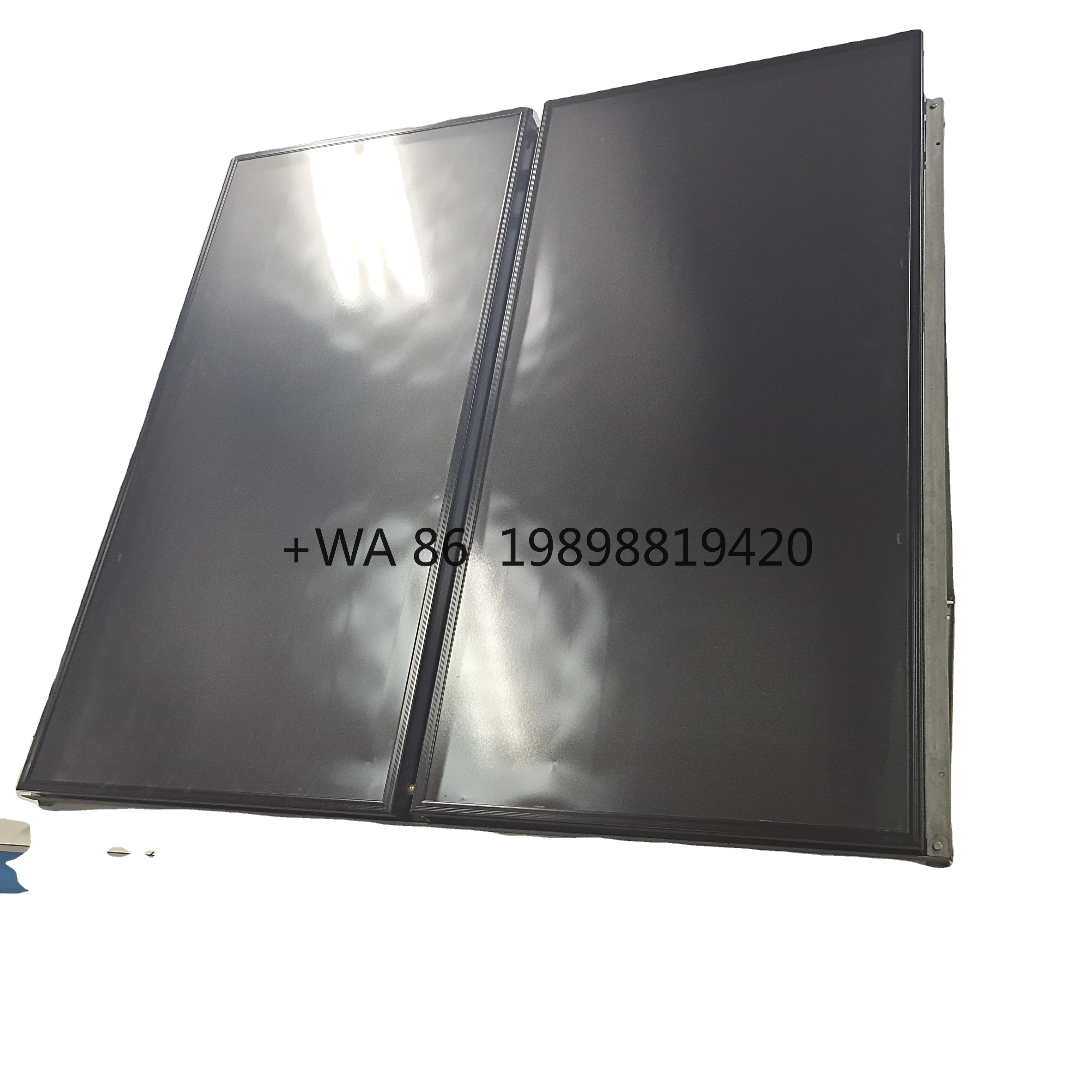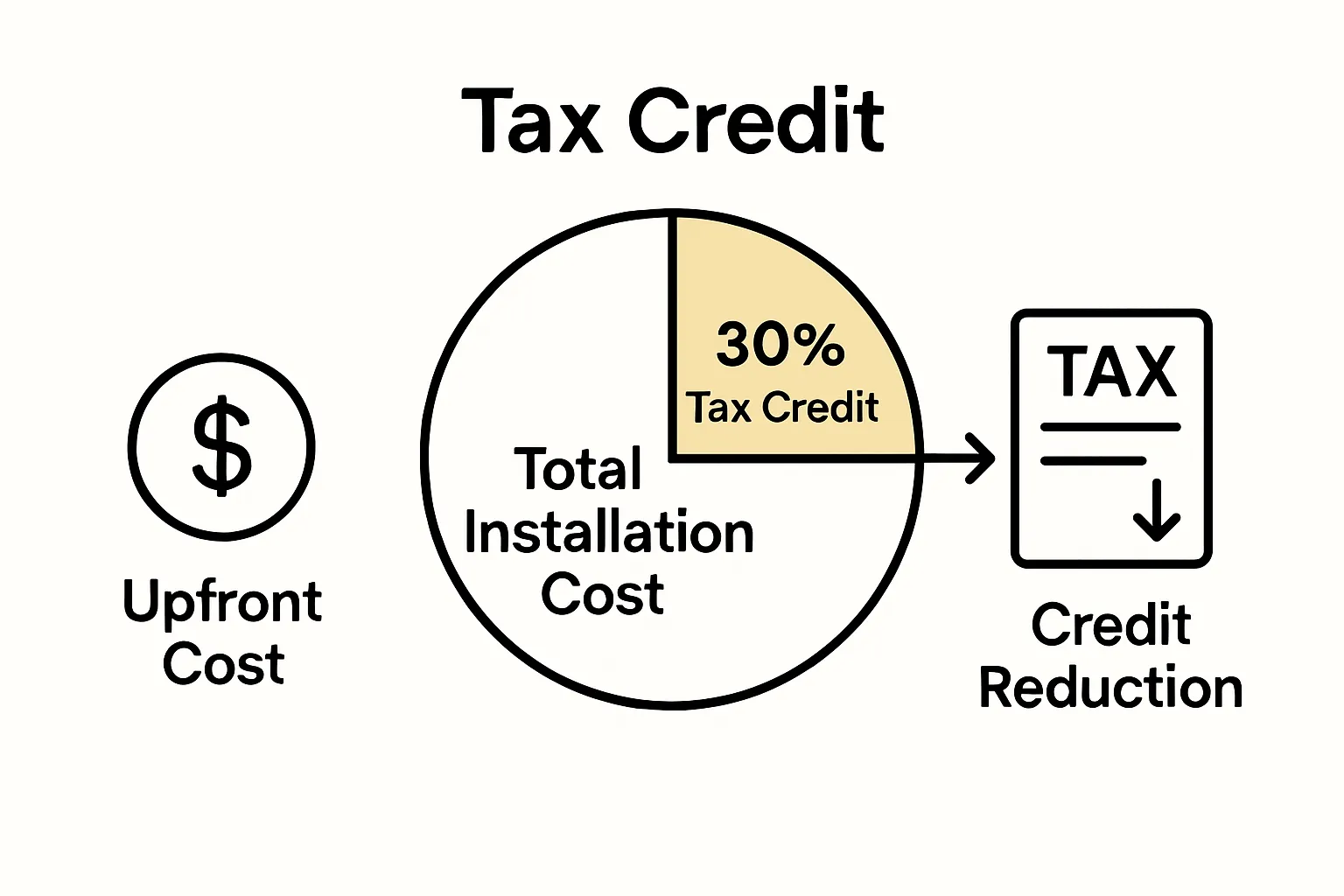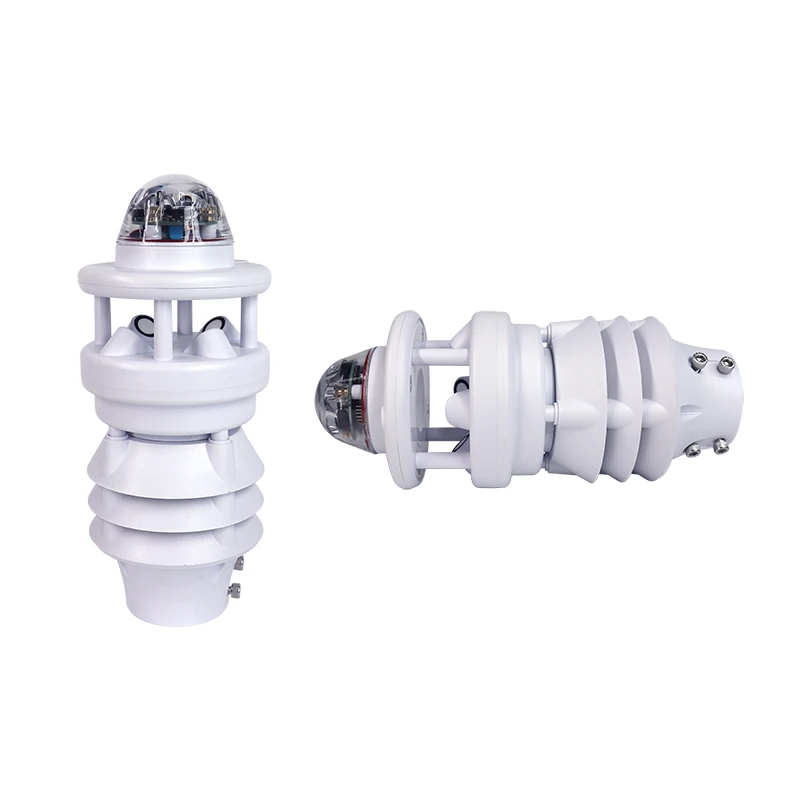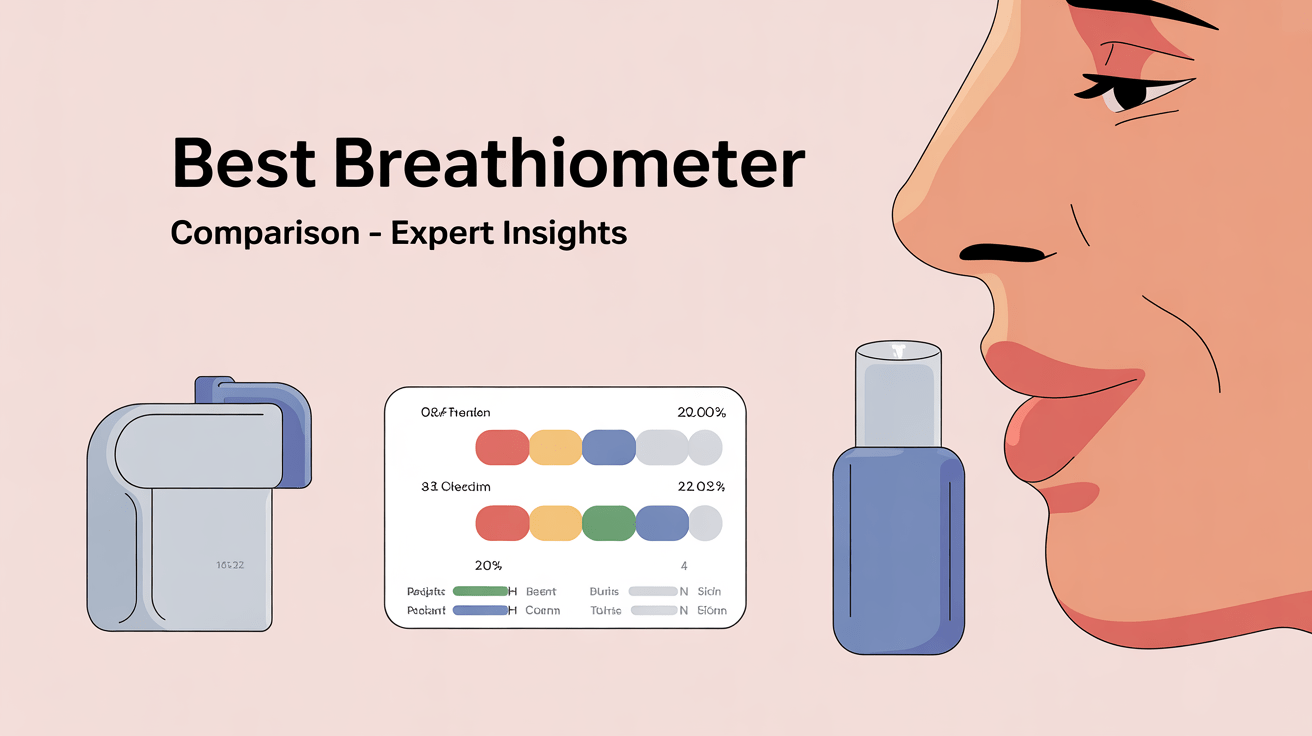




Businesses have more reason than ever to consider solar power for their operations, with the government offering a direct tax credit that can cover a whopping 30 percent of total installation costs for commercial solar systems. Most people focus only on the savings or the environmental perks. What stands out is just how this tax credit flips the script, turning what used to be a costly upgrade into an obvious financial win for companies ready to invest in clean energy.
Table of Contents
- What Is The Commercial Solar Tax Credit?
- Importance Of The Commercial Solar Tax Credit
- How The Commercial Solar Tax Credit Works
- Key Concepts Behind The Commercial Solar Tax Credit
Quick Summary
| Takeaway | Explanation |
|---|---|
| Claim up to 30% tax credit | Businesses can deduct 30% of solar installation costs from their federal taxes. |
| Available from 2022 to 2032 | The credit applies to solar systems installed within this timeframe, maximizing benefits. |
| Supports sustainability efforts | Investing in solar energy helps businesses align with sustainability goals and reduce operational costs. |
| Encourages innovation in solar tech | The credit incentivizes technological advancements, making renewable energy more feasible. |
| Dollar-for-dollar tax reduction | Unlike deductions, this credit lowers total tax bills, directly enhancing financial savings for businesses. |
What is the Commercial Solar Tax Credit?
The commercial solar tax credit represents a powerful financial incentive designed to encourage businesses to invest in solar energy infrastructure. This federal tax credit allows companies to deduct a significant percentage of their solar installation costs directly from their tax liability, making renewable energy investments more economically attractive.
Understanding the Fundamental Mechanics
At its core, the commercial solar tax credit functions as a dollar-for-dollar reduction in federal income taxes owed by businesses that install solar photovoltaic systems. Unlike a tax deduction that merely reduces taxable income, this tax credit provides a direct reduction in the total tax bill, offering substantial financial benefits.
Businesses can claim a percentage of their total solar system installation expenses, which includes equipment costs, labor, and related system components. As of 2023, the Inflation Reduction Act has dramatically enhanced these incentives, providing more substantial support for commercial solar investments.

Key Components of the Tax Credit
Understanding the commercial solar tax credit requires examining its critical components. According to Solar Energy Industries Association, the tax credit offers several important features:
- Percentage of Eligible Costs: Currently allows businesses to claim up to 30% of total solar installation expenses
- Applicable Timeframe: Credit available for solar systems installed between 2022 and 2032
- Gradual Reduction: Planned step-down in credit percentage after 2032
Businesses considering solar investments should recognize this tax credit as more than just a financial incentive. It represents a strategic opportunity to reduce operational expenses, demonstrate environmental responsibility, and align with growing sustainability expectations. By offsetting significant installation costs, the commercial solar tax credit transforms solar energy from a potentially expensive upgrade to a financially compelling business decision.
Importance of the Commercial Solar Tax Credit
The commercial solar tax credit extends far beyond mere financial incentives, representing a critical mechanism for accelerating sustainable business practices and supporting national renewable energy goals. By creating substantial economic advantages, this policy encourages businesses to transition toward cleaner energy infrastructure and contribute to broader environmental objectives.
Economic Transformation and Business Incentives
The tax credit fundamentally reshapes the economic landscape for commercial solar investments. According to Environmental Protection Agency, businesses can realize significant financial benefits through strategic solar implementation. The credit effectively reduces upfront capital expenditures, making renewable energy projects more accessible and financially viable for companies across various industries.
Environmental and Strategic Business Impact
Beyond immediate financial considerations, the commercial solar tax credit drives meaningful environmental and strategic outcomes. Companies investing in solar energy can:
- Reduce Carbon Footprint: Dramatically decrease greenhouse gas emissions
- Enhance Corporate Reputation: Demonstrate commitment to sustainability
- Achieve Long-Term Energy Cost Stability: Mitigate future energy price fluctuations
Moreover, businesses can read more about potential solar technology advancements that complement these tax credit benefits. The incentive serves as a catalyst for technological innovation, encouraging companies to explore cutting-edge renewable energy solutions that might have seemed financially prohibitive in previous years.
By providing a robust financial framework, the commercial solar tax credit transforms solar energy from an optional investment to a strategic business imperative. It empowers organizations to align economic interests with environmental responsibility, creating a win-win scenario that supports both corporate financial health and global sustainability goals.

How the Commercial Solar Tax Credit Works
The commercial solar tax credit operates through a structured mechanism that allows businesses to directly reduce their federal tax liability by claiming a percentage of their solar energy system installation costs. This financial incentive is designed to make renewable energy investments more economically attractive and accessible for companies across various industries.
Calculation and Qualification Parameters
To qualify for the commercial solar tax credit, businesses must meet specific criteria. According to Internal Revenue Service, the tax credit applies to solar photovoltaic systems that generate electricity for a commercial facility. Companies can claim the credit for:
- Solar Equipment: Photovoltaic panels and related hardware
- Installation Costs: Labor and associated system setup expenses
- Energy Storage Systems: Batteries and complementary storage technology
Claiming Process and Financial Mechanics
The tax credit functions as a direct dollar-for-dollar reduction in federal income taxes. Businesses can explore potential solar panel savings to understand the comprehensive financial impact. The current incentive structure allows companies to claim up to 30% of total solar installation expenses, which can represent a substantial financial benefit.
Businesses must carefully document their solar investments, maintaining precise records of equipment purchases, installation costs, and system specifications. The credit can be applied in the tax year when the solar system becomes operational, providing immediate financial relief and encouraging rapid renewable energy adoption. By transforming solar investments from potential financial burdens into strategic economic opportunities, the commercial solar tax credit serves as a powerful catalyst for sustainable business practices.
Below is a table summarizing the core features and eligibility parameters of the commercial solar tax credit, making it easier to understand how the incentive works for businesses.
| Feature | Description |
|---|---|
| Credit Percentage | Up to 30% of total solar installation expenses |
| Eligible Costs | Equipment (solar panels, hardware), installation (labor), and qualifying energy storage systems |
| Applicable Timeframe | Available for solar systems installed between 2022 and 2032 |
| Reduction Schedule | Planned gradual reduction in credit after 2032 |
| Applies to | Commercial solar photovoltaic systems that generate electricity for business use |
| Claim Year | Can be claimed for the tax year in which the solar system becomes operational |
| Documentation Required | Detailed records of equipment, installation, and system operation |
Key Concepts Behind the Commercial Solar Tax Credit
The commercial solar tax credit represents a sophisticated policy instrument designed to transform renewable energy investment strategies. By creating strategic financial incentives, this policy aims to fundamentally reshape how businesses approach sustainable energy infrastructure and technological innovation.
Policy Framework and Strategic Objectives
Understanding the tax credit requires examining its broader policy context. According to Environmental Protection Agency, the underlying goal is to accelerate renewable energy adoption by making solar investments more economically attractive. The credit functions as a deliberate economic mechanism to address climate change and support national clean energy transition objectives.
Core Conceptual Elements
Several fundamental concepts underpin the commercial solar tax credit:
- Economic De-Risking: Reduces financial barriers to renewable energy investments
- Technological Incentivization: Encourages innovation in solar energy systems
- Environmental Policy Integration: Aligns business interests with sustainability goals
Businesses can explore advanced solar technology insights to understand the broader technological landscape complementing these tax credit principles. The policy effectively transforms solar energy from a niche investment to a mainstream strategic business decision, bridging economic pragmatism with environmental responsibility.
By providing a robust financial framework that directly addresses upfront investment challenges, the commercial solar tax credit represents more than a simple tax reduction strategy. It serves as a sophisticated policy tool designed to accelerate technological innovation, support sustainable business practices, and create meaningful pathways toward a lower-carbon economic future.
Take the Next Step Toward Smarter Solar Savings
Are you struggling to understand how the commercial solar tax credit can actually work for your business? If you want to make sense of complex tax incentives and turn them into real financial advantages, you are not alone. Many decision-makers worry about the challenges of upfront solar costs, confusing installation details, and making sure their investments truly pay off. The facts in this article show that navigating solar tax credits is essential for any business seeking lower operating costs and lasting sustainability.

The good news is that you do not have to figure this out by yourself. At HTEXS, we break down difficult topics like tax credits, solar technology, and energy savings into simple, honest reviews and guides. Our team has created user-friendly resources such as detailed solar technology insights and real-world breakdowns on solar panel savings and payback so you can make informed decisions without hassle. Visit HTEXS now to discover how easy it can be to maximize your solar investment and move your business forward today.
Frequently Asked Questions
What is the commercial solar tax credit?
The commercial solar tax credit is a federal tax incentive that allows businesses to deduct a percentage of their solar installation costs from their federal tax liability, making it more financially attractive to invest in solar energy.
How much can businesses claim under the commercial solar tax credit?
As of 2023, businesses can claim up to 30% of their total solar installation expenses, including equipment costs and labor, through the commercial solar tax credit.
What costs are eligible for the commercial solar tax credit?
Eligible costs for the tax credit include the purchase of solar equipment, installation expenses, and certain energy storage systems that support solar energy generation.
What is the duration of the commercial solar tax credit?
The commercial solar tax credit is available for solar systems installed between 2022 and 2032, with a planned gradual reduction in the credit percentage after 2032.
Recommended
- How Much Do Solar Panels Save in 2025 – htexs.com
- Understanding Solar Cell Technology: How It Works – htexs.com
- 7 Types of Solar Technology You Should Know About – htexs.com
- Understanding What is the Latest Solar Panel Technology – htexs.com








